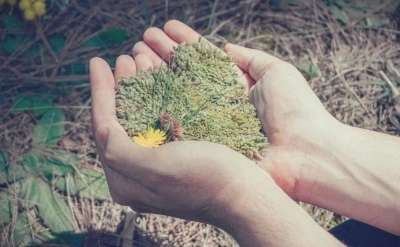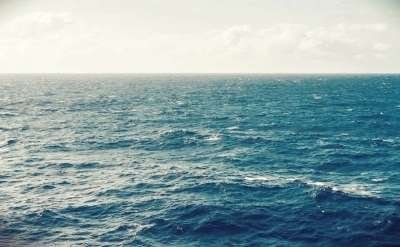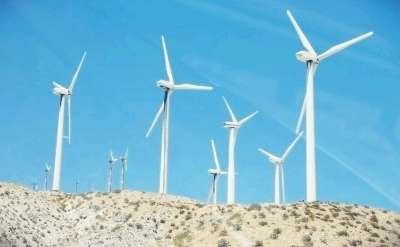There are so many things for children to learn about in the world. But what are the most important things? Here is a list of 10 things that every child should know. These are basic concepts that will help them understand how the world works and how they fit into it. Learning these early on will give your child a strong foundation for future learning. So start with these 10 topics, and then build on them as your child grows older.
Every country has a different language and culture.

Many countries have their own languages! For example, Japan has Japanese, India has Hindi, England has British English, and Korea has Korean.
But many countries also have more than one language that they use! They may speak one language with friends and family members in the neighborhood but then go to the market in another town for groceries where they speak a different language.
Some countries even speak several languages throughout the country!
Children should know that not everyone speaks English, and it is important to respect people who speak other languages. Besides language, different cultures have different traditions and beliefs about the world that children should be aware of.
For example, people may believe that you should not point at someone with your index figure to indicate who you are talking about in some countries. This is considered rude in some countries, but it is just part of the culture in other countries. Learning about other people’s cultures will help children become respectful and well-rounded adults.
Children should also be aware of their own culture. People who live in the United States speak English but often have different traditions and beliefs from those in England! Children need to understand their own cultures and the cultures of others.
Every child is unique, just like every snowflake.
Everyone is unique! Someone may have blue eyes, someone else brown. One person has curly hair, while another person is straight. Some people are tall, while others are short.
Just like snowflakes, children are all different in their own ways! Children need to know that they are unique and special, just like they are. Children should also be aware of how differences in people can enrich their lives.
Although all people are similar, no two individuals are exactly alike. Children need to understand that everyone has differences, and they should appreciate that others may look or act differently than them. This is important for helping children grow into open-minded adults who value diversity in the population. So remind your child whenever you can!
When someone is different from us, it’s easier to see new perspectives on problems in the world. But when everyone is exactly the same, it can be hard to develop new ideas about things! Diversity is a key part of what makes our world exciting and fun. Understanding this concept will help children feel good about themselves no matter what other people think of them.
There are over 7 billion people in the world.
There are currently over 7 billion people in the world! This is a considerable number and keeps growing every day. Imagine if you were to count to seven billion by one; how long would it take you?
This may be one of the most challenging concepts for children to understand because it can be hard to think about how something as simple as sharing the same planet means we all have stories worth learning about. And not everyone’s story will be exactly like your own!
Being aware of how many other people are on the planet will help children feel connected with others worldwide, not just their community or school. Understanding this concept can help children appreciate that although they may be different from some people, everyone has something in common because we all live on earth together.
Children need to know how many other people are out there. Although some people may not realize this early on, everyone is part of the larger picture of life on Earth. Children should understand their unique roles within that group. It can be helpful for children to think of themselves as being just one piece in an enormous puzzle that includes every person who has ever lived or will live someday. We all fit together like pieces of a bigger picture – and we all depend on each other! So even though your child is small now (or younger than five years old), they are still an important part of this world and should be treated as such.
What can they do to preserve the environment?

Everyone can take small steps to help the environment, even kids as young as five years old!
Here are a few tips:
- Turn off the lights when you leave a room.
- Plant a tree to make oxygen and help clean the air.
- Only use things that come from recycled materials, like paper bags, instead of plastic bags.
- Only use recyclable things like glass and aluminum cans for recycling.
Remind your child to take small steps towards helping the environment every day! Even just a few simple changes can make a big difference in how our world looks and feels as they get older, which is something worth teaching them about now before it becomes second nature to them!
And if your child helps keep the earth clean and beautiful, they will get a chance to explore it more. There is so much diversity on Earth that you could spend years exploring and still not see everything!
Taking a walk through a forest, a garden, or even a park can be a lot of fun.
This activity can also help teach children about the critical relationship between humans and other living things. Experience will show them that being kind to the earth is not only suitable for future generations, but it’s also something that they can enjoy by exploring more places.
With so many new experiences every day, some kids may wonder if there’s anything left to discover in this world! Luckily for them, adults have been finding new stuff about our planet since prehistoric times! Children should look forward to learning the same skills their parents looked forward to as they grew up too.
Whether you go to new places or stay in your own backyard, there’s always something fun and interesting to look forward to. It may be challenging for children under five years old to imagine this, but with each day of exploration comes learning about new things and meeting new people from around the world.
Money doesn’t grow on trees.
If kids want new toys, they’ll need to recycle or trade their old ones.
Money is simply a tool for exchanging goods and services, but children may not understand this right off the bat! Teaching them all about money can be tricky since they are just learning how money works themselves, but this is also an opportunity for you to teach your child how to use their allowance or share it with others.
Maybe the most critical thing that little kids need to know about money is that it is essential to help people reach their goals. You can explain this concept by talking about how someone might save up for something special, like a vacation or even Christmas presents, using their allowance.
Knowing how the world works financially is vital for children to learn about.
This can be tricky to teach since money comes in many different forms, but kids must learn the basics early on.
The first thing older kids should know about money is how to stay safe with it by keeping track of credit cards and ATM passwords. They also need to remember not to share personal information online because someone asks for it! Once your child knows these basics, you’ll teach them good habits that will last a lifetime.
As your child gets older, you can help them look into getting their own bank account or even using an app like Venmo or PayPal, which are both legitimate ways for them to use what they earn through allowance or other jobs.
When your child becomes a teenager, you can also teach them how to budget their allowance by setting up a plan to learn about the benefits of saving up for something they want. Teaching them these skills early on will help them be financially stable when they get older and have their own jobs.
Language is power!
Studying another language is one of the most valuable things a child can do while still young enough to pick it up quickly. Learning a second language helps children become more culturally aware and even offers some health benefits.
Bilingual people tend to have better problem-solving skills, making learning easier in every classroom. It’s also been proven that kids who learn a second language at an early age have better thinking abilities in both languages when they get older.
As your child gets older and it starts to feel like a chore, you can help them by changing the way you teach them so they remember why learning a second language was important in the first place. You can also talk about what kind of career might require another language and how that could help them find a job they enjoy.
Water covers approximately 70% of the earth’s surface.

More than two-thirds of the earth’s surface is covered by water! This can be a complex concept to comprehend because children may not know everything to learn about the world yet.
Children should be aware that there are many places and animals they may discover while exploring, and understanding how much space on Earth is water will help them appreciate this idea.
When you think about how much living space on Earth is taken up by water, it can make your child feel like exploring all of it takes forever! But if we slow down and take the time to look closely at what we see around us every day, we’ll get a chance to see new things at just about any age.
This is especially important for little ones who might not be able to travel yet, but they can still appreciate their surroundings by looking at the world through new eyes!
This world is the only planet where humans currently live.
Earth is the only planet we know of that has life on it, and it’s by far the largest and most complex planet in our solar system. Even if your child doesn’t realize exactly how big their homeworld is, they should be able to understand this concept as long as you explain things in a way that makes sense for them.
The size of planets can make children feel small, but such knowledge will teach them the importance of respecting their environment. This message becomes much clearer when children can recognize their place within all the wonders of nature.
Everyone lives on Planet Earth together.
And like every place else in the universe, this place can get really crowded sometimes!
The idea that there are many other planets like ours may be too hard for some children to understand, but learning about our world and its place in space will help them grow into curious adults who want to learn more about how things work. This skill will be essential when they’re older and looking at colleges or universities.
Our solar system has 8 planets and 4 dwarf planets, so when your child is ready to learn more about planets beyond Earth, you can show them some pictures and videos online with simple explanations of what each planet looks like.
It may take a while for children under five years old to wrap their heads around this idea, but adults who know how it feels can be patient with them as they grow.
Understanding this concept will help children look forward to scientific discoveries about our world and feel curious about how things work in general!
Kids can’t always trust what they see on TV, in movies, or in YouTube videos.
Visual media can be a powerful tool for teaching children new information, but they should understand that not everything on TV or online is always true. Being able to tell the difference between actual facts and fake news will help children become smarter consumers of information as they grow older. It’s also important for them to learn this skill now to avoid accidentally sharing false information with their friends and family!
Children need to tell the difference between what is real and what is not.
Checking sources of information is a skill that many adults still struggle with, so it’s something that kids should learn early on if they want to grow up being good at spotting fake news! It can be tough to find out where information comes from sometimes, but this will help children feel secure about making their own decisions in life. Knowing how to define actual facts vs. false ones will also help children avoid becoming victims of propaganda.
What are natural resources?

Natural resources are supplies of things made by the earth’s natural environment, like water or trees. They’re important because these materials give us everything we need to live.
Natural resources are the raw materials used to make things or do work.
For example, lumber used to make a table is a natural resource, and so is metal ore that can be crushed into small pieces for use in all types of machines.
This concept may seem simple at first because it’s just an expanded definition of the word “resource,” but understanding how everything that we have comes from nature will help children understand their place within it. This knowledge can also encourage them to respect the earth and its many gifts!
Even young children may be able to tell you where their food comes from, but it can be hard for them to understand that everything in their lives has a different source than what they may expect! Teaching your children about natural resources early on will help them appreciate how the world works when they grow up and explore.
Conclusion.
These 10 essential lessons can help kids grow into intelligent, well-rounded adults who know how to think critically about the world around them!
So remember that learning about these concepts is an ongoing journey that can teach children lots of new skills like critical thinking, patience, and even the ability to spot fake news.
Thank you for reading, and good luck!

Dive into the insights of Matthew Mansour, a seasoned life coach, fitness guru, and health mentor. With a portfolio boasting over 800 thought-provoking articles, Matthew is passionate about unraveling the intricate layers of the human psyche. His reading choices? Books that shed light on our unique human journey, helping him (and his readers) harness the power of the mind, transforming challenges into stepping stones.
Matthew proudly wears his badge as a self-help aficionado. His mantra? There’s always room to grow, learn, and be inspired. He thrives on gleaning wisdom from pioneers, turning their experiences into valuable lessons for all.
Always on the pulse of emerging trends, Matthew immerses himself in groundbreaking courses and research centered around life coaching and holistic health. Eager to impart his knowledge, he’s here to guide anyone keen on enhancing their life journey.
Beyond his professional persona, Matthew is a devoted animal lover, a proud New Jersey resident, and a doting husband and father. Dive into his self-improvement blog and let Matthew guide you towards a life filled with purpose and passion!
Reviewed By: Joanna Perez and Marcella Raskin
Edited By: Lenny Terra
Fact Checked By: Gabrielle J. Smith
Photos Taken or Curated By: Matthew Mansour